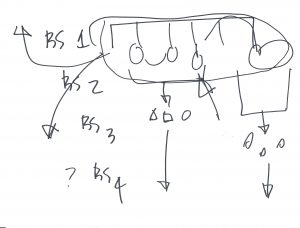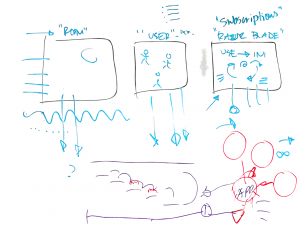The importance of design processes in product development.
Product Development Process
Processes are critical for efficient and innovative product development that drive margins for revenue.
HatchOne uses a five phase approach for full product development projects. Each phase can be gated with go/no-go decisions and allows for important revision cycles for proof-of-concept, specifications and prototype revisions. These phases can be called anything (as long as they exist) and should focus on creative areas of development – graphic, animation, branding, copywriting, engineering, industrial design.

There are also important processes to utilize within each phase that often get lost during development.
- Brainstorming
- Design Documents
- Prototyping
Brainstorming
The ultimate goal of a brainstorm is to generate as many concepts as possible to solve a well-defined problem statement and then converge as quickly as possibly into viable solutions to quantify and test. Without a process to generate and converge quickly, teams can get stuck in blue sky concepting and lose sight of the product requirements. The process you choose is project and team specific – whatever works best. Ensure there is leadership, tools and converging.

Design Documents
A design document process is key to efficient product development. Knowing ‘why’ you are designing something sets the overall objective. Having traceable elements that drive ‘what’ you are developing create clear design goals. These traceable requirements then drive ‘how’ the product features, product look or function are created. Having clearly defined product requirements in a development cycle can reduce time to market by half. Without clear requirements products can miss the target market or worse, miss the time to market opportunity due to schedule slips.

Prototyping
Rounds of quickly made, clearly evaluated and simply revised designs creates spec driven decisions and stops any ‘band-aiding’ of unviable solutions. The prototype rounds should start early with rough, ugly breadboards that prove concepts and eliminate outliers. Prototypes should then transition to more detailed designs, answering any spec driven requirements and then to complete cosmetic, functional prototypes to test efficacy with users. Data driven results guide the final design revisions for pre-production units to evaluate and test. Any variation of these prototypes will ensure market ready products to sell. Any skipped phase or prototype can decrease market success – from the customer perspective.


